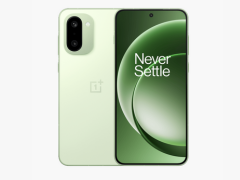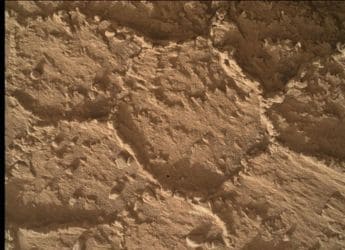- Home
- Science
- Science News
- Scientists Make Mouse Skin Transparent Using Food Dye, Here's Everything You Need to Know
Scientists Make Mouse Skin Transparent Using Food Dye, Here's Everything You Need to Know
Researchers made mouse skin temporarily transparent using food dye, allowing organ observation without surgery.

Photo Credit: Unplash/ National Cancer Institute
Professor Zihao Ou studies food dye used to make mouse skin temporarily transparent.
Scientists have found a way to make mouse skin temporarily transparent by using a common food dye. A team led by Zihao Ou, Assistant Professor of Physics at the University of Texas at Dallas, applied a solution containing tartrazine, a yellow food colouring, to the skull and abdomen of live mice. This allowed them to observe the internal organs and blood vessels of the animals without performing any surgery. Once the dye solution was removed, the skin returned to its normal state without harming the mice.
Optical Physics Behind the Process
The transparency of the skin is achieved by a combination of water and the food-colouring tartrazine, also known as FD&C Yellow No. 5. The dye alters the skin's refractive index, allowing light to pass through more easily by reducing light scattering. This process allows the skin to become see-through in a manner similar to how fog dissipates.
Observing Organs and Brain Function
Researchers used the dye to observe blood vessels just beneath the skull, along with the mouse's internal organs and muscle contractions in the abdomen. The process does not involve incisions or any physical damage to the skin or bones, making it a groundbreaking tool for biomedical research. The transparency appears within minutes, similar to how facial creams work by diffusing molecules into the skin.
Future Applications of the Technique
The breakthrough could revolutionise fields such as biomedical imaging and healthcare, providing non-invasive ways to observe internal body structures. If successful in humans, it could be used in medical procedures like blood draws by making veins more visible. This study, conducted at Stanford University, highlights a significant step forward in medical research.
Get your daily dose of tech news, reviews, and insights, in under 80 characters on Gadgets 360 Turbo. Connect with fellow tech lovers on our Forum. Follow us on X, Facebook, WhatsApp, Threads and Google News for instant updates. Catch all the action on our YouTube channel.
Related Stories
- Samsung Galaxy Unpacked 2025
- ChatGPT
- Redmi Note 14 Pro+
- iPhone 16
- Apple Vision Pro
- Oneplus 12
- OnePlus Nord CE 3 Lite 5G
- iPhone 13
- Xiaomi 14 Pro
- Oppo Find N3
- Tecno Spark Go (2023)
- Realme V30
- Best Phones Under 25000
- Samsung Galaxy S24 Series
- Cryptocurrency
- iQoo 12
- Samsung Galaxy S24 Ultra
- Giottus
- Samsung Galaxy Z Flip 5
- Apple 'Scary Fast'
- Housefull 5
- GoPro Hero 12 Black Review
- Invincible Season 2
- JioGlass
- HD Ready TV
- Laptop Under 50000
- Smartwatch Under 10000
- Latest Mobile Phones
- Compare Phones
- OnePlus 15R
- Realme Narzo 90x 5G
- Realme Narzo 90 5G
- Vivo S50 Pro Mini
- Vivo S50
- OPPO Reno 15c
- Redmi Note 15 5G
- Redmi Note 15 Pro 5G
- Asus ProArt P16
- MacBook Pro 14-inch (M5, 2025)
- Infinix Xpad Edge
- OnePlus Pad Go 2
- OnePlus Watch Lite
- Just Corseca Skywatch Pro
- Acerpure Nitro Z Series 100-inch QLED TV
- Samsung 43 Inch LED Ultra HD (4K) Smart TV (UA43UE81AFULXL)
- Asus ROG Ally
- Nintendo Switch Lite
- Haier 1.6 Ton 5 Star Inverter Split AC (HSU19G-MZAID5BN-INV)
- Haier 1.6 Ton 5 Star Inverter Split AC (HSU19G-MZAIM5BN-INV)

















